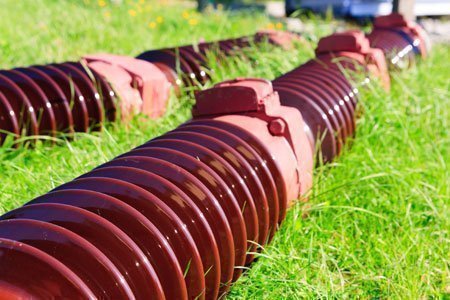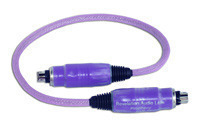PCMCIA stands for Personal Computer Memory Card International Association, an international standards body and trade association based in San Jose, California. Founded in 1989, PCMCIA aimed to create a standard for connecting peripherals to portable computers. PCMCIA developed the PC Card.
PC Card or PCMCIA Card
PC Cards are credit card sized removable devices designed to add extra functions to portable computers. Introduced in 1990, the cards were first known as PCMIA cards as the original standards were established by the Personal Computer Memory Card International Association.
PC Cards are mainly used to attach network adapters, modems, radio transceivers, sound cards, solid state disks and hard disks to portable PC's. PC cards became very popular as they provided much needed expansion options for early laptop computers.
Type I, II and III
PC Cards feature a 68-pin connector and have an 86×54 mm (3.4×2.1") form factor. The first PC cards developed were Type I cards. Type I cards are 3.3 mm thick and supported actual memory cards (for example ATA Type I Flash Memory Cards) like DRAM or flash memory.
Type II cards are 5 mm thick and these cards are now the most commonly used PC cards. Type II cards provide I/O support together with other memory applications. Most laptops are now equipped with one or more Type II slots.
Type III cards are 10.5 mm thick and are an expanded form of the Type II cards. A 16 mm Type IV card was introduced by Toshiba; but it was not accepted as a standard by PCMCIA.
PCMCIA cards were designed and marketed by the US industry. The main competitor for PCMCIA cards is the JEIDA cards which the Japanese portable computer industry had developed as a standard for memory cards. In 1991, the two standards were merged and the results became JEIDA 4.1 or PCMCIA 2.0.
Second Generation CardBus Cards
CardBus cards were introduced in 1995. The technology of CardBus cards is architecturally similar to the PCI bus. CardBus can accommodate cards of various voltages. CardBus also supports bus mastering and power management. The power management features allows cards to be turned off or idled so as to extend battery life. CardBus can provide data transfer up to 132 Mbytes/sec over a 33MHz, 32-bit data path.
Third Generation ExpressCard
Introduced in 2003, ExpressCards are developed for both desktop and mobile use. These cards are smaller than PC Cards and can be hot swapped. ExpressCards use a single lane PCI Express technology or a USB 2.0 which provides 500 Mbytes/sec total throughput.
Though these cards are 5 mm thick similar to Type II PC cards, ExpressCards do not use the same 86×54 mm footprint. ExpressCards come in 75×34 mm and 75×54 mm sizes. ExpressCards were previously named "NEWCARD".
Drivers for PC Cards
Card Services and Socket Services are the drivers for PC cards. Card Services help to manage hot swapping and automatically configure the system resources needed by the card such as memory, IRQs, and I/O addresses. Card Services communicate to Socket Services, the low-level software which is designed to communicate directly with the PC Card controller chip. Socket Services are built into the system BIOS.




Graeme Stewart
I have a very early 1992 Triumph/Adler Walkstation (laptop) project, in which I am renovating this antique back to use. I acquired a PCMIA (PC Card) adapter as per spec.
It has 3.3mm width, 54mm width, & ~90mm length and is 68-pin, as is my Laptop.
However, the notch and/or slot at the socket end of this PCMIA card apparently do not match the plastic mouldings on the slide inside the socket. It is a double socket, allowing for two cards, one above the other but my Card will fit in neither because of the apparent, to me, mismatch in the notch & slots. The pins on the socket do not get near enough to the female socket on the PCMIA card. The notch &/or slots inside the housing seem to be holding them a few mm apart. If this is the problem, the solution maybe to file at the Card side and re-shape the notch until the parts match.
At first I thought I was looking at bent pins preventing a match, but closer inspection under a decent lamp revealed the true details.
I guess it’s possible, though I have found no reference on the web, (which barely existed in 1992), to any custom PCMIA cards for particular brands of computer or laptop.
Anybody any ideas? Again I have a Triumph/Adler Walkstation 4/33 SX, with 2×type 1 68-pin PCMIA sockets, one above the other in a side compartment behind a flap.